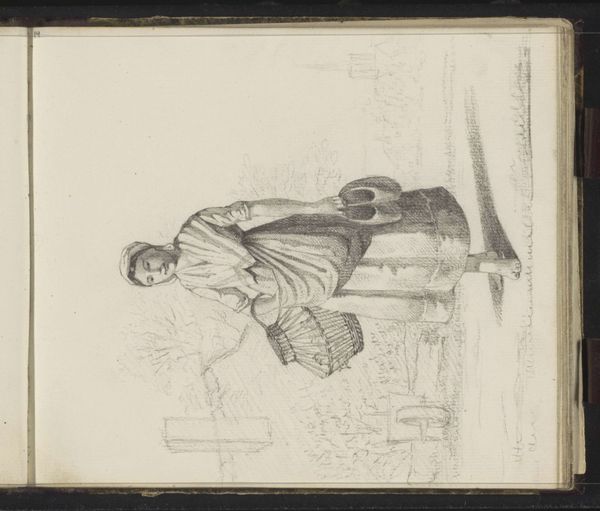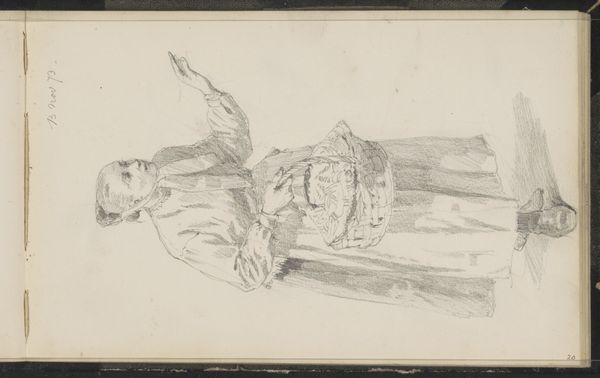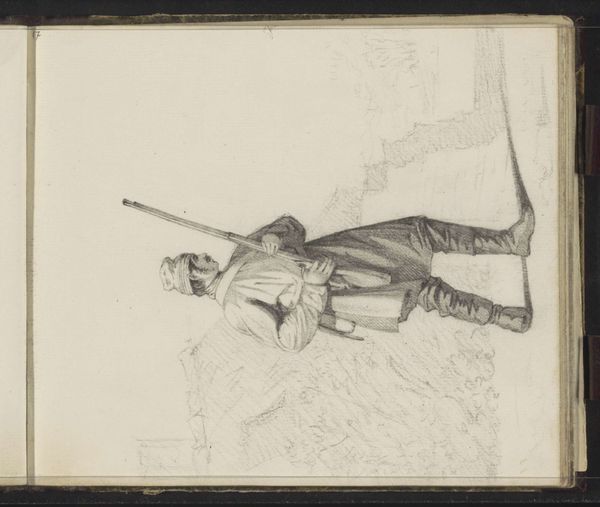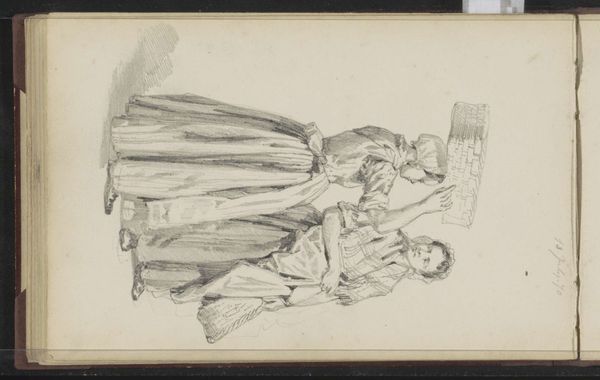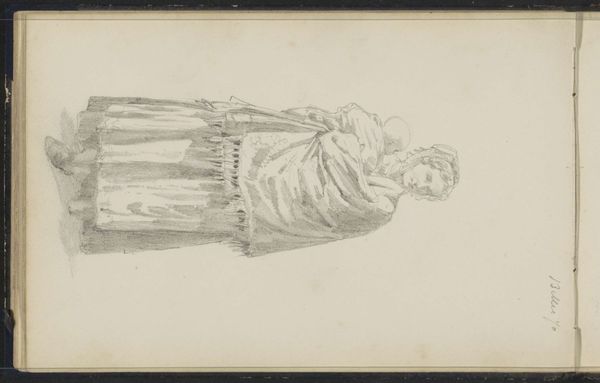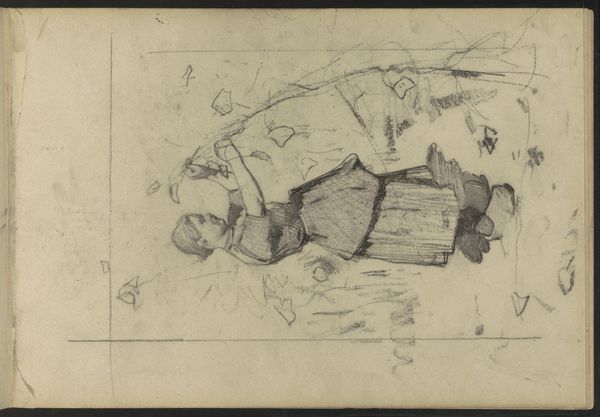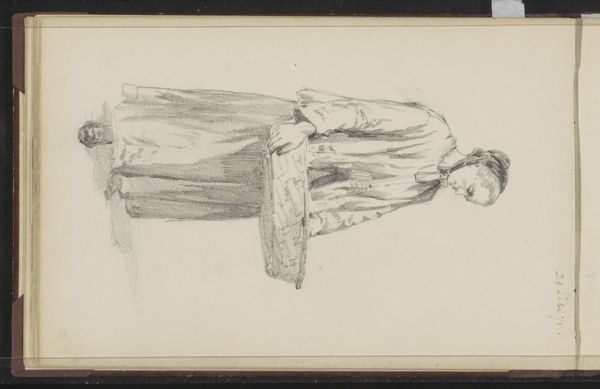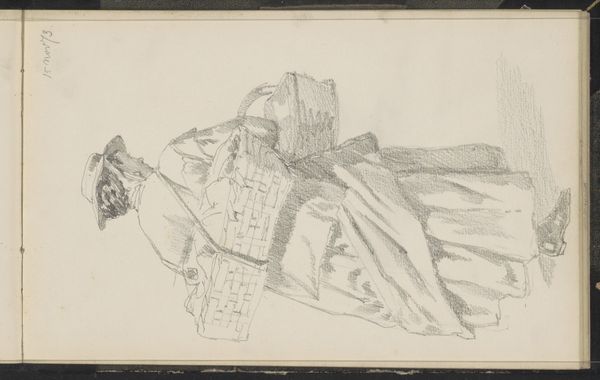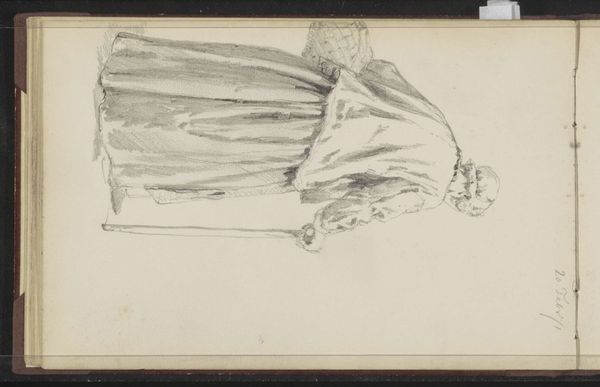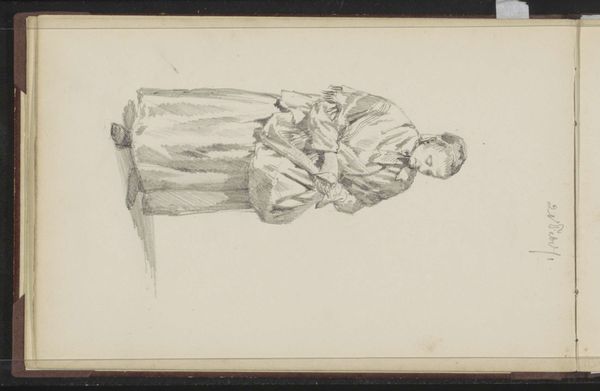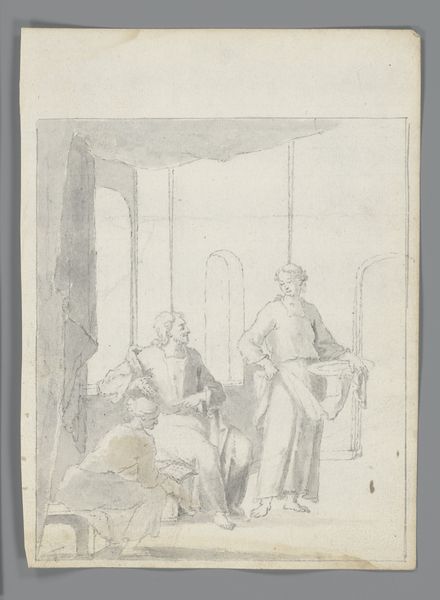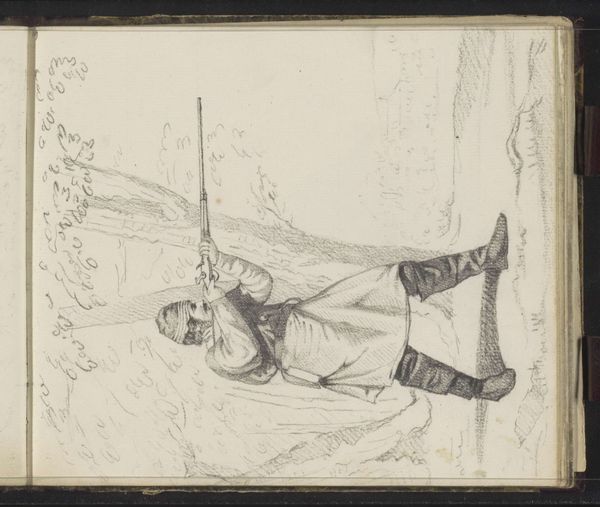
drawing, paper, pencil
#
portrait
#
drawing
#
aged paper
#
toned paper
#
quirky sketch
#
pen sketch
#
pencil sketch
#
sketch book
#
landscape
#
paper
#
personal sketchbook
#
pen-ink sketch
#
pencil
#
sketchbook drawing
#
genre-painting
#
sketchbook art
#
realism
Copyright: Rijks Museum: Open Domain
Curator: This sketch, "Zittende vrouw in een dorpsstraat," or "Seated Woman in a Village Street," comes to us from Hendrik Abraham Klinkhamer. The Rijksmuseum places its creation between 1820 and 1872. Editor: It feels incredibly immediate, doesn't it? Just a glimpse captured in pencil and ink. The way the woman's shawl is draped suggests movement, but she's fixed in place somehow. Curator: Klinkhamer’s choice of materials – pencil and ink on paper, specifically likely from a personal sketchbook – speaks to its purpose as a study. These were practical tools, meant for quick capture of observed realities. Editor: And what reality! She sits in the margins, doesn’t she? Literally on the edge of the page, but also socially. An older woman, possibly working-class from the look of her, rendered in quick, almost furtive strokes, overshadowed by architecture. Curator: The lines are economical, capturing form with minimal effort. We see the rapid execution, a sense of the artist working within time and material constraints to observe the working class’ lives. Note the layering of pencil strokes building depth and shadow. Editor: That contrast is key. Klinkhamer positions her not only against the houses and her working tools, but alongside those cryptic handwritten notes too. Were they her words, observations of Klinkhamer? Whose voice are we supposed to privilege here? It asks profound questions about representation, who is allowed to create these depictions and how accurate they may be. Curator: That's fascinating. Looking closely, the paper itself tells a story; it has aged to a warm, toned color which alters how we perceive the initial marks and process involved in making it. This is crucial – time, labour and aging affects everything in what becomes art. Editor: Right! Thinking about her social context – a woman existing in a Dutch village, her daily existence shaped by labour, tradition, and likely restricted freedoms... Klinkhamer gives us space to reflect on it, with a rather powerful message and emotion for such a delicate sketch. Curator: I agree, and seeing how Klinkhamer utilized such commonplace materials and rapid techniques shows an economy in its making—everything contributed towards its compelling effect. Editor: Precisely, these unassuming sketches, the marginal subjects, ultimately compel us to think critically about how societal structures shape everyday life. They help to deconstruct class and the female place within Dutch society during this period.
Comments
No comments
Be the first to comment and join the conversation on the ultimate creative platform.
